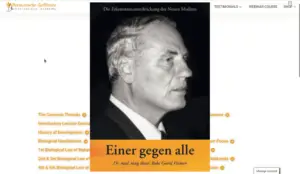
Myocardial infarction is an epileptic seizure of the striated ventricular muscles in the right myocardium with hypertension
and the left myocardium with circulatory collapse (dangerous).
We are at the myocardium, that is, the heart muscle, which is the orange group. The large chambers of the heart are striated muscles (orange group) and are controlled by the cerebral medulla.
The large chambers are to be distinguished from the atria, which originated from the smooth old intestinal musculature and are controlled by the midbrain.
With the atria, we would be in ventricular fibrillation. However, in this video, we will discuss the Sensible Biological Special Programs from the heart’s right and left large chambers.
Blood circulation:
The deoxygenated blood gets into the right atrium, into the large right ventricle, and from there, it reaches the lungs, where the gas exchange takes place.
The oxygenated blood comes from the lungs into the left atrium, the left large ventricle, and back to the periphery of our body.
The associated conflict content in the myocardium is an overwhelming conflict, in the sense, why isn’t he doing as I want him to do?
But the conflict content could also be an overreaching, in the sense that I was cheated. In the conflict-active phase, the heart muscle necrotizes. This necrosis is misinterpreted in conventional medicine as the result of a blocked coronary vessel. The muscle, therefore, does not die as a result of a lack of blood supply, as conventional medicine believes, but because an overwhelming conflict is active. In the healing phase, the heart muscle is replenished with the help of the responsible bacteria and swelling. In the crisis, the epileptic seizure of the ventricle follows.
If the conflict load is low, the epileptic seizure is clonic rhythmic, which is not dangerous.
In case of a large conflict load, the tonic seizure, that is, the long-lasting seizure is dangerous. In the right myocardium, there is a strong palpitation, and the blood pressure rises for the duration of the crisis.
In the left myocardium, the circulation drops to the basement. If the left myocardium is involved in a major conflict and the seizure continues for a long time, the patient may die within a few minutes. This is also sudden infant death syndrome.
When the crisis is survived, the swelling in the myocardium will decrease. However, the heart muscle remains thicker than before at the end of healing, which is also the biological sense because it is a program of the deluxe group.
If one gets into hanging healing with this program, the heart muscle becomes thicker and thicker, and in some circumstances, the heart valves do not seal properly.
This symptom is also called athlete’s heart, but it has nothing to do with sports at all; it is just an overwhelming conflict. In the case of the myocardium, handedness is decisive.
The heart rotates during development. So in the right-handed person, the right heart is not assigned to the partner, but to the mother/child.
So when the right-handed person resolves an overwhelming conflict with the mother/child, he has palpitations and briefly increased blood pressure at night – the most frequent crises occur around 4 am.
If the right-hander solves an overwhelming conflict with his partners, he has a circulatory collapse in the crisis.
In the cerebral medulla, from where the myocardium is controlled, there is also the brain relay for the diaphragm in the vicinity, which has a similar conflict content, namely: I’m running out of breath.
The diaphragm is also striated musculature. If this diaphragm reacts along now, thus it also makes an epileptic seizure, and the patient has in addition respiratory distress.
So in a right heart myocardial seizure, you have palpitations up your throat, and often, in addition, you have shortness of breath. It’s scary, but not as dangerous as the left myocardial seizure.
If the patient then goes for an examination, this seizure is already over, and in most cases, the conventional doctor finds no organ change in the heart.
Similar to the epileptic patient, in which one also hardly finds any change in the skeletal muscles.
Often, seriously ill patients feel overwhelmed by their suffering and react with the myocardium. Then, when they are on the road to recovery, they often resolve this overwhelming conflict and die of a left heart myocardial attack.
A somewhat 50-year-old man hit the lift column while skiing and suffered a scare fright conflict. When he could solve this scare-fright conflict after some time, this brain relay stored edema, and he had an operation on the supposed brain tumor.
Due to this severe medical condition, his marriage broke apart, and his wife wanted to divorce him. He suffered a conflict of overwhelming towards his partner. As a right-handed man, his left myocardium was affected. In addition, he suffered a refugee conflict with his kidney collecting tubes because now he is left alone.
Because of this water retention, his surgical cavity in the brain filled up again, and he was about to have his 2nd brain surgery. Only now, they found their way to Dr. Hamer.
When Dr. Hamer decoded his conflicts, the wife realized her co-responsibility and declared that now she would not leave her husband after all.
Dr. Hamer said: If that is the case, you do not need brain surgery now, but you must go to a cardiac clinic immediately. You will solve your left heart myocardium, and it is wise to be already in the intensive care unit by then.
The patient went home, and he went to a cardiac clinic still the same day. The doctors there listened in amazement to the patient’s explanations and agreed to keep him for monitoring. A few days later, he had his left heart myocardial seizure, and he survived it.
This case study should illustrate that in Germanische Heilkunde, we can predict crises and act accordingly in advance.
Have fun with your studies, and goodbye
until the next video

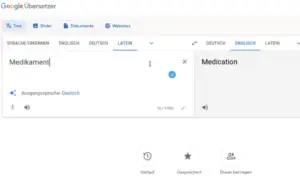
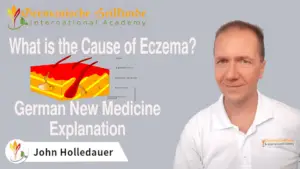

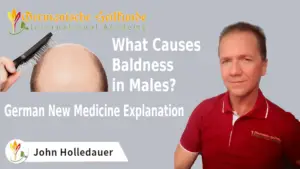
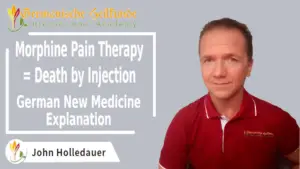






| Cookie | Duration | Description |
|---|---|---|
| cookielawinfo-checkbox-analytics | 11 months | This cookie is set by GDPR Cookie Consent plugin. The cookie is used to store the user consent for the cookies in the category "Analytics". |
| cookielawinfo-checkbox-functional | 11 months | The cookie is set by GDPR cookie consent to record the user consent for the cookies in the category "Functional". |
| cookielawinfo-checkbox-necessary | 11 months | This cookie is set by GDPR Cookie Consent plugin. The cookies is used to store the user consent for the cookies in the category "Necessary". |
| cookielawinfo-checkbox-others | 11 months | This cookie is set by GDPR Cookie Consent plugin. The cookie is used to store the user consent for the cookies in the category "Other. |
| cookielawinfo-checkbox-performance | 11 months | This cookie is set by GDPR Cookie Consent plugin. The cookie is used to store the user consent for the cookies in the category "Performance". |
| viewed_cookie_policy | 11 months | The cookie is set by the GDPR Cookie Consent plugin and is used to store whether or not user has consented to the use of cookies. It does not store any personal data. |
You’ll be informed by email when we post new articles and novelties. In every email there is a link to modify or cancel your subscription.